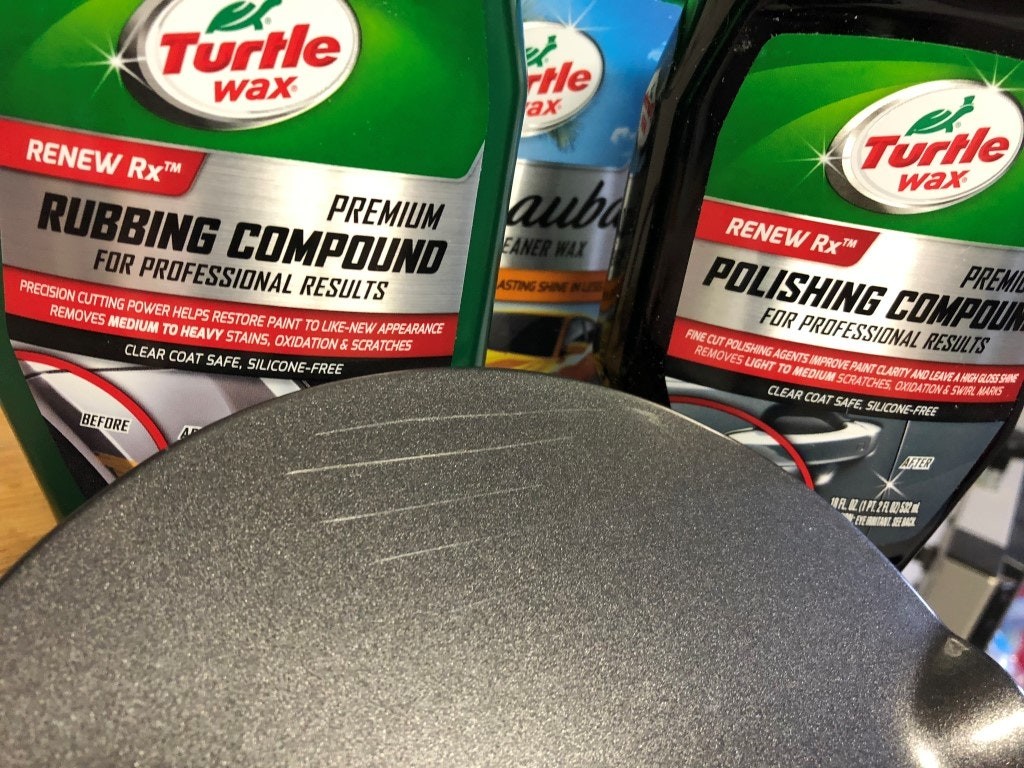Car scratches are an unfortunate reality for vehicle owners. Whether it’s a minor brush against a bush or a more noticeable key mark, scratches can detract from your car’s appearance and potentially decrease its value. Fortunately, getting rid of scratches on your car doesn’t always require a trip to a professional body shop. Depending on the severity of the scratch, you can often achieve excellent results at home using the right techniques and products. This guide will walk you through various methods to effectively get rid of scratches on your car, from light surface blemishes to deeper imperfections.
Understanding the type of scratch you’re dealing with is crucial before you start any repair work. Car paint typically consists of several layers: the clear coat, the base coat (color), the primer, and the metal body. Most minor scratches only affect the clear coat, which is the outermost protective layer.
For the lightest scratches, often referred to as swirl marks or spiderwebs, you might only need simple polishing compounds. These scratches are usually only visible in direct sunlight and feel smooth to the touch. Slightly deeper scratches might penetrate the clear coat but not reach the base coat. These might be visible in most lighting conditions but are still often treatable with more abrasive polishes or scratch removers. However, if a scratch is deep enough to expose the base coat or even the primer, indicated by color showing through or a scratch that catches your fingernail, more intensive methods, possibly including sanding and paint touch-up, will be necessary.
Let’s explore some DIY methods to get rid of scratches on your car, starting with less abrasive options and progressing to more involved techniques.
For very minor surface scratches, products like Turtle Wax Scratch & Swirl Remover, or similar light-duty scratch removers, can be a good starting point. These products are designed to gently polish the clear coat and minimize the appearance of superficial scratches.
Image: Turtle Wax scratch removal products showing minimal effect on car scratches.
In testing various scratch removal solutions, a range of Turtle Wax products, including Rubbing Compound, Polishing Compound, Scratch & Swirl Remover, and Carnauba Liquid Wax, were evaluated. These products, applied by hand, demonstrated a limited ability to diminish even minor surface scratches. While they might offer a slight improvement noticeable from a distance, closer inspection under typical lighting reveals that these light scratches remain visible. For the most superficial blemishes, these products might offer a marginal improvement, but for anything beyond the absolute lightest scratches, more effective solutions are required.
Moving up in intensity, Meguiar’s Ultimate Compound, Polish, and Liquid Wax represent a step towards more effective scratch removal. Using these products by hand showed slightly better results than the Turtle Wax range, but still proved insufficient for anything beyond the most superficial scratches. As highlighted by experts like Pennington, for noticeable scratch removal, manual application often falls short.
To achieve significantly better results, especially for moderate scratches, power tools become essential. The Meguiar’s DA Power System, which attaches to a standard drill, exemplifies this approach. This system utilizes an orbital motion to ensure more even polishing coverage and increased effectiveness.
Image: Meguiar’s DA Power System results: Light car scratches virtually invisible after machine polishing.
Employing the DA Power System with Meguiar’s compounds markedly improved scratch removal. Lighter scratches became virtually invisible, demonstrating the power of machine-assisted polishing. However, it’s important to note that moderate to deeper scratches still remained noticeable even with machine polishing alone. This underscores the limitation of polishing compounds when dealing with scratches that penetrate beyond the very surface of the clear coat.
For more substantial scratch removal, especially for moderate and some deeper scratches, sanding becomes a necessary step. The 3M Trizact Precision Scratch Kit is designed specifically for this purpose. This kit incorporates a sanding process to level the clear coat, followed by compounding and polishing to restore the shine.
According to Kevin Ansell, a senior engineer at 3M, sanding is often crucial to truly improve the appearance of scratches. The 3M Trizact system utilizes fine-grit sandpaper for wet sanding the clear coat. While sanding might seem intimidating, it is a controlled method to remove a thin layer of clear coat and effectively level out the scratch. After sanding, the kit includes rubbing compound and polish, applied with drill attachments, to buff and refine the sanded area.
Image: 3M Trizact Precision Scratch Kit results: Deeper car scratches still somewhat visible after sanding and polishing.
The 3M Trizact system proved effective in significantly improving moderate scratches. While sanding initially dulls the paint, the subsequent compounding and polishing stages restore the shine and effectively minimize the appearance of scratches. Even deeper scratches showed improvement, although they might still remain somewhat visible. The key takeaway is that for scratches beyond the superficial level, sanding, as incorporated in systems like 3M Trizact, is often necessary to achieve substantial improvement.
In conclusion, getting rid of scratches on your car involves understanding the scratch severity and choosing the appropriate method. For the lightest surface scratches, simple scratch removers or polishes might suffice. For moderate scratches, machine polishing offers a significant step up in effectiveness. For deeper scratches that penetrate the clear coat, sanding, followed by compounding and polishing, as offered by kits like 3M Trizact, is often required to achieve noticeable results. Remember to always start with the least abrasive method and progressively increase intensity as needed. With the right approach and products, you can effectively get rid of many car scratches and restore your vehicle’s finish.
